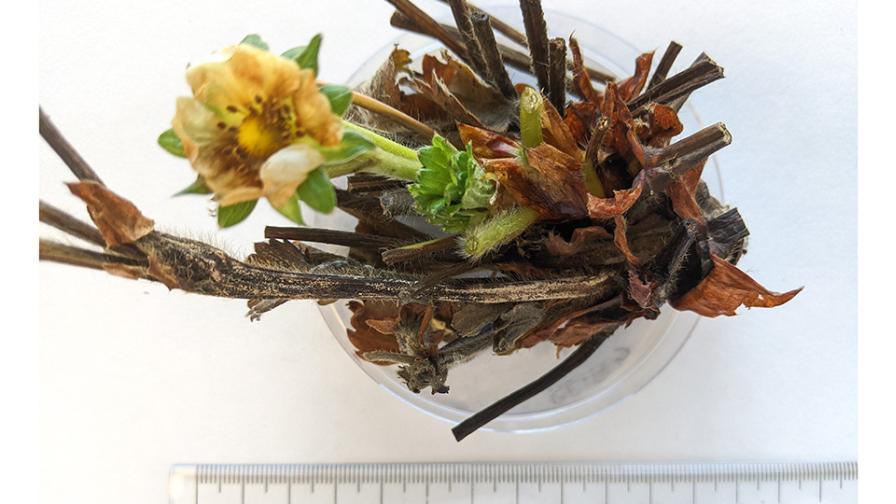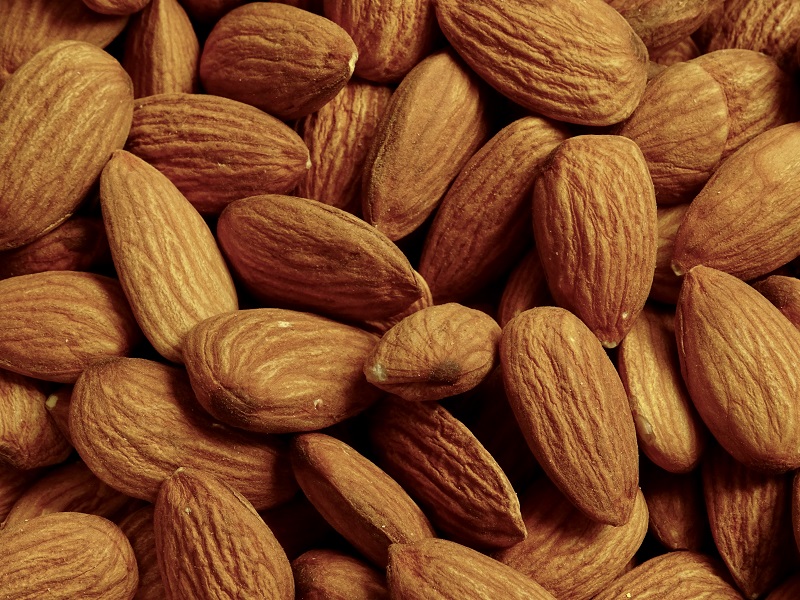Catching a Drift: Fusarium Wilt Displays Range

Strawberry plants with sporodochia produced by the Fusarium wilt pathogen.
Photo courtesy of USDA ARS
The pathogen that causes Fusarium wilt has much greater reach between strawberry fields than pathology researchers ever realized.
Peter Henry, a Research Plant Pathologist with the Crop Improvement and Protection Research unit of USDA ARS, announced two breakthroughs at University of California Cooperative Extension’s annual Strawberry Production Research Meeting. The first revelation revolves around Fusarium oxysporum f. sp. fragariae (Fof), the fungus that causes Fusarium wilt in strawberry plants. The pathogen is typically spread within and between fields, mostly by the transport of contaminated soil during soil tillage and preparation operations.
“We’ve always known this pathogen is soilborne, and if soil particles are blown in a severe storm, then those could spread the pathogen maybe across the street or from field to field,” Henry says. “But this new research is about a little bit longer distance potential for aerial dispersal.”
Until the 2022 growing season, signs of the Fusarium wilt pathogen had never been visibly identified on strawberry plants. Symptoms, yes … signs, no.
“This was common knowledge — and I believed this as well — that you couldn’t ever see the Fusarium wilt pathogen,” Henry says. “But that changed this year.”
Henry and his colleagues confirmed that peach- and orange-colored dots on the peduncles and petioles of dead strawberry plants were produced by the Fusarium wilt pathogen. The structures, called sporodochia, were then discovered in 87% of the 24 Fusarium wilt-affected fields that Henry’s lab visited in the Watsonville/Salinas, CA, area in August and September.
“Once I knew what I was looking for, you didn’t have to look through dozens and dozens of plants to find these sporodochia,” Henry says. “Most plants had some, and they could cover a large amount of tissue as well.”
At this point, Henry’s lab began testing short-distance aerial dispersal of sporodochia while using a small fan that generated a wind speed of 8.8 km/per hour (about 4 mph) for 60 minutes. In each of four instances, airborne dispersal of spores from sporodochia were evident in petri dishes at distances up to 30 centimeters.
“That’s a pretty low wind speed compared to what we’re used to [in the field],” Henry says, citing the weekly to twice-weekly use of bug vacuums that can generate wind speeds of 7 to 54 km/hour and typical afternoon windspeeds of greater than 14 km/hour.
“It’s easy to imagine how a bug vac could suck up a bunch of spores that fly into the air above the tractor and are carried by afternoon winds of 14 km/hour or more to adjacent fields or potentially farther,” Henry says.
FUTURE RESEARCH
Several questions arise in follow-up: Can the airborne spores cause disease? Can they initiate an infection on the foliage that possibly moves down into the crown? What is the long-distance range of the Fusarium conidia? And can the airborne spores account for some cases of ineffective flat fumigation?
“Even though the fumigation job may have been very effective at disinfesting the soil, there still could be high disease severity in the next season,” Henry says. “We’ve seen that a number of times, where broadcast fumigation is failing. I think these airborne spores may account for some of those failures.”
For more information on sporodochia, Henry recommends a peer-reviewed paper he helped author.










